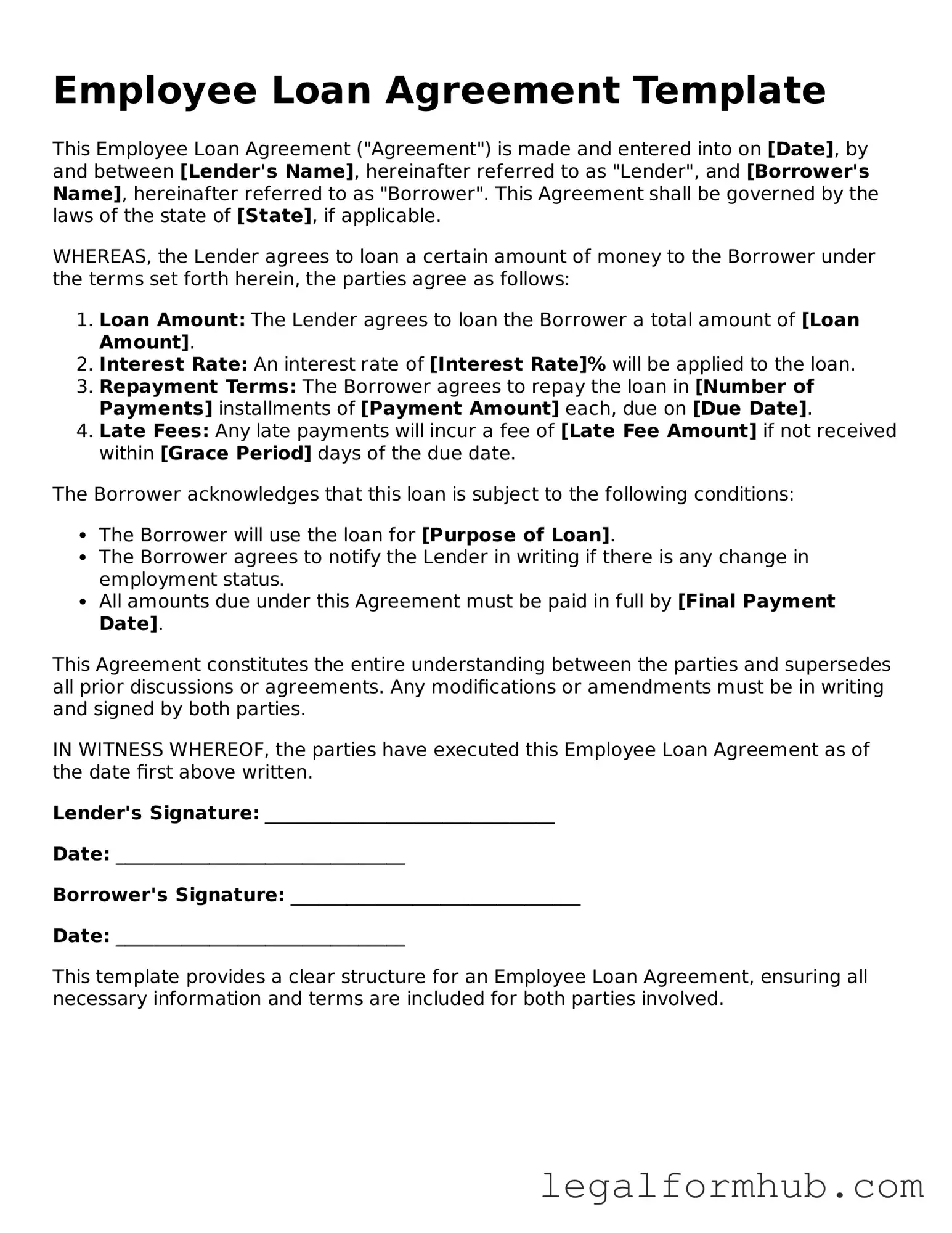The Employee Loan Agreement form shares similarities with a Personal Loan Agreement. Both documents outline the terms and conditions under which a loan is provided to an individual. They typically specify the loan amount, interest rate, repayment schedule, and any penalties for late payments. While a Personal Loan Agreement can be between individuals or financial institutions, the Employee Loan Agreement is specifically designed for the employer-employee relationship, ensuring that both parties understand their obligations and rights regarding the loan.
Another document that resembles the Employee Loan Agreement is a Promissory Note. A Promissory Note is a written promise to pay a specified amount of money to a designated party at a defined time or on demand. Like the Employee Loan Agreement, it includes critical details such as the loan amount and repayment terms. However, a Promissory Note is often simpler and may not include as many provisions regarding employment status or additional terms that might be relevant in an employer-employee context.
The Employee Loan Agreement is also akin to a Mortgage Agreement, which is used when an individual borrows money to purchase real estate. Both documents require the borrower to repay the loan under specific conditions. However, a Mortgage Agreement typically involves collateral—in this case, the property itself—while the Employee Loan Agreement usually does not require collateral, focusing instead on the employee’s commitment to repay the loan through payroll deductions or other means.
In order to ensure all parties are well-informed and protected, it is essential to utilize a comprehensive Loan Agreement form that clearly delineates the terms of the agreement. This helps prevent misunderstandings and outlines the expectations from both the lender and the borrower. For a reliable resource, you can access a customizable Loan Agreement form at LegalDocumentsTemplates.com, which can aid in formalizing the lending process efficiently.
Lastly, the Employee Loan Agreement can be compared to a Credit Agreement. A Credit Agreement outlines the terms under which a borrower can access credit from a lender. Similar to the Employee Loan Agreement, it details the amount of credit available, interest rates, and repayment terms. However, a Credit Agreement is often broader and may apply to various types of loans or credit lines, while the Employee Loan Agreement is tailored specifically for loans given to employees by their employers, emphasizing the unique relationship and trust between the two parties.
